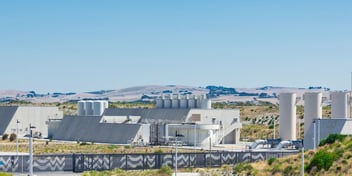Darling River fish deaths have “severe impact” on local community
The town of Menindee in western New South Wales (NSW) is dealing with the fallout after hundreds of thousands of fish died in a stretch of the Darling River.
Central Darling Shire Council is responsible for cleaning up the dead fish, but General Manager Greg Hill said the council doesn’t have the resources or funding to deal with an event of this magnitude.
“We’ve got a population of 2000 but we cover a landmass the size of Tasmania,” Hill said.
He said the NSW Government was assisting with the clean-up, including providing funding for a contractor to collect the fish, which will begin early this week.
The work will be done using a purpose-built barge, with the dead fish collected in nets and stored on the barge before being offloaded onto a truck and taken to the Menindee landfill site for disposal.
Hill said the event had a "severe impact" on the entire community, with the council carting water from Menindee to residents who had previously relied on the river for water.
“It affects our tourism, industries and economy … This water is used for domestic purposes, irrigation and for stock," he said.
“We’ll probably be trucking in water until the drought breaks … It’s not just the fish deaths – the water quality is already so poor because of the algae, which means there’s a lack of water that people can rely on.”
According to the NSW Department of Primary Industries, the fish deaths happened when a cool change hit the Menindee region, killing off an existing blue-green algal bloom. This resulted in less dissolved oxygen in the water, which in turn killed the fish.
Murray Darling Basin Authority Chief Executive Phillip Glyde said a lack of water flowing into the northern rivers, and the impact of a century of over-allocation of water resources throughout the basin, had contributed to the event.
“Lack of water during drought leads to water quality issues, and can provide prime conditions for blue-green algae to thrive,” he said.
“With rivers running dry and water storages across the northern Murray-Darling Basin at 20%, drought conditions are affecting communities, businesses, animals and the environment.”
While Hill said no one group was responsible for the event, he believes the council should have more input into the management of the river system.
“To me, it seems the State and Federal Governments want all the say, but when it comes to hands-on work they want to pass it down to local government,” he said.
“You can’t make it rain, no matter how good you are, but there was probably a lack of foresight … We need to learn from this to make sure it doesn’t happen again. We’ll have droughts, but we need to waterproof ourselves so these situations don’t continue.”
In unwelcome news for residents, Federal Minister for Agriculture and Water Resources David Littleproud said in a statement there is a “high likelihood of more fish kills very soon”.
“The reality is we’re in a serious drought and the only silver bullet is rain,” he said.
Littleproud suggested a $5 million basin-wide native fish recovery strategy to address the issue, which he proposed would come from Murray-Darling Basin Funds.
He has also convened a meeting of state and federal water managers and environmental water holders to discuss the immediate risk of further fish kills and how to mitigate this risk, including through the release of environmental water.
Related podcast:
https://omny.fm/shows/australianwater/joe-pera-on-the-impact-of-decaying-fish-on-water-q


